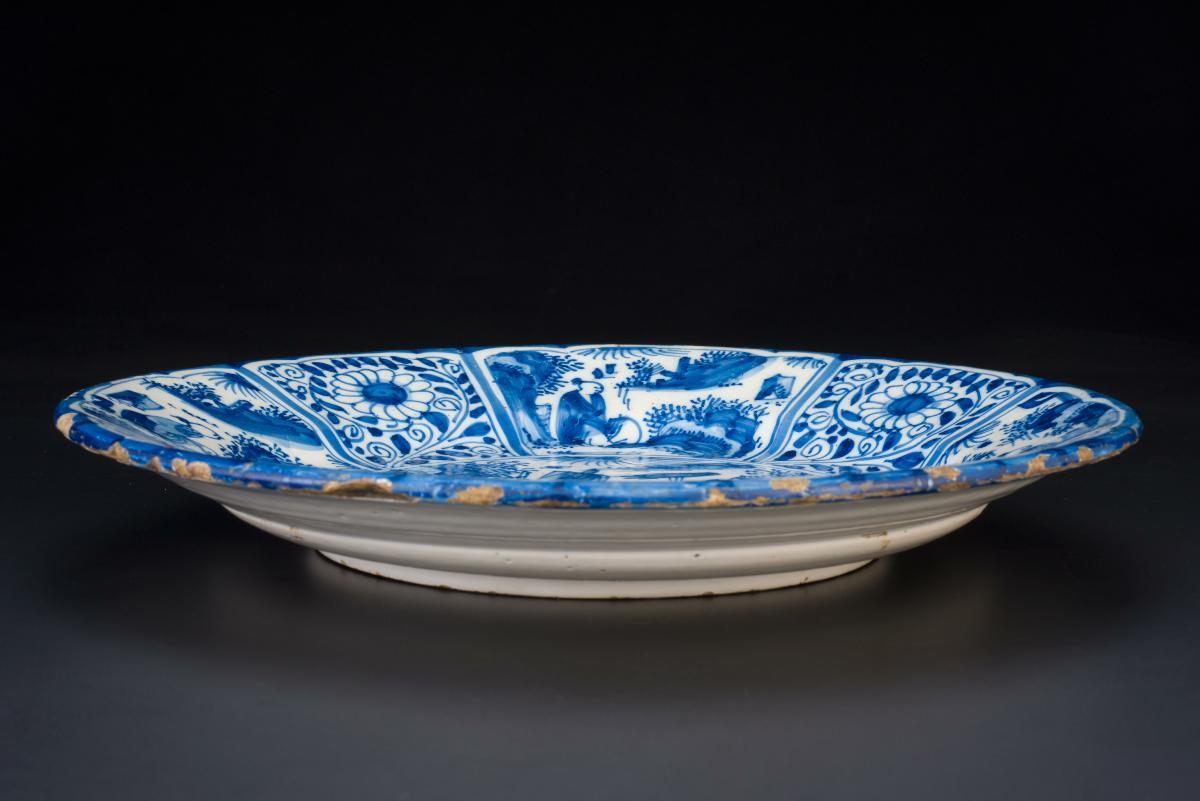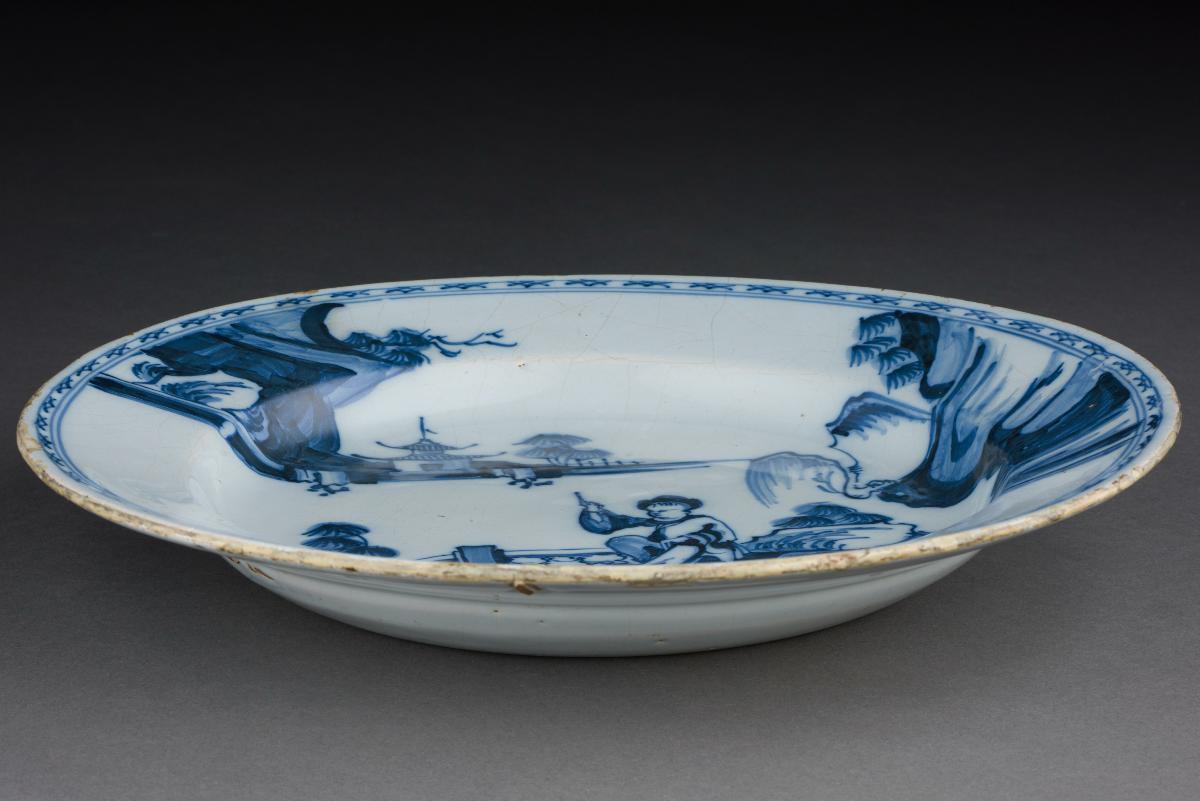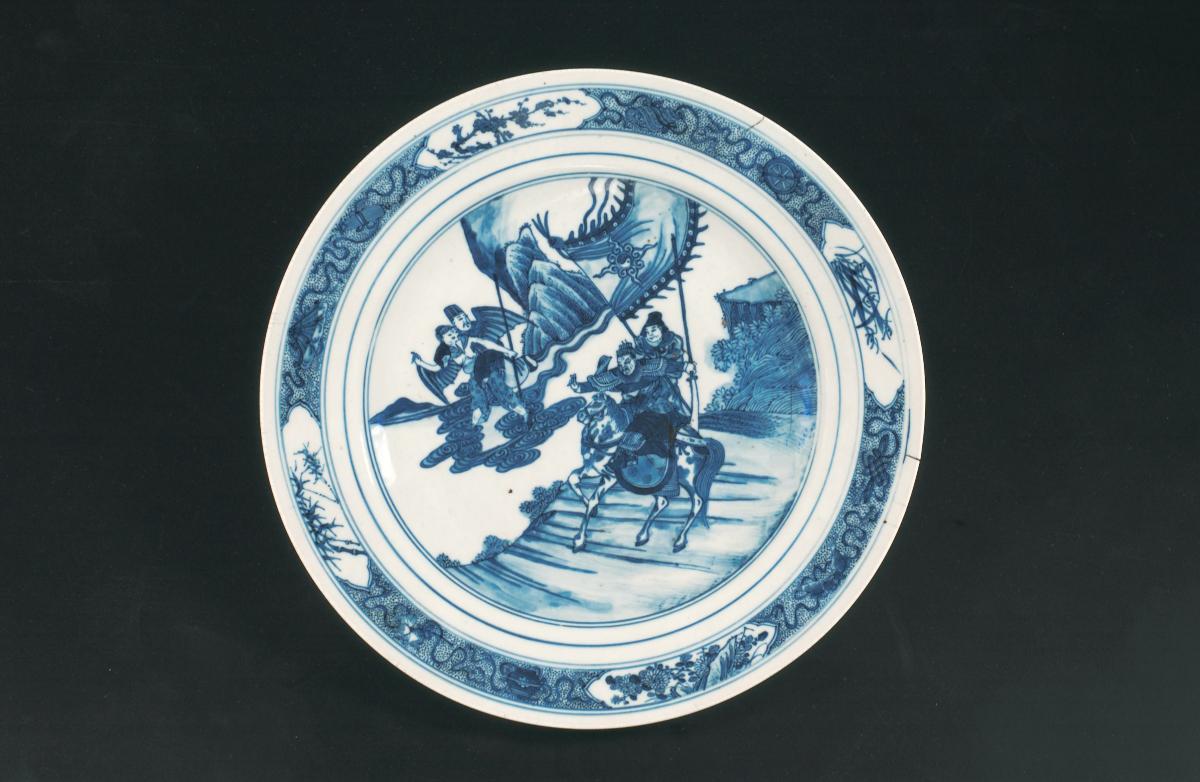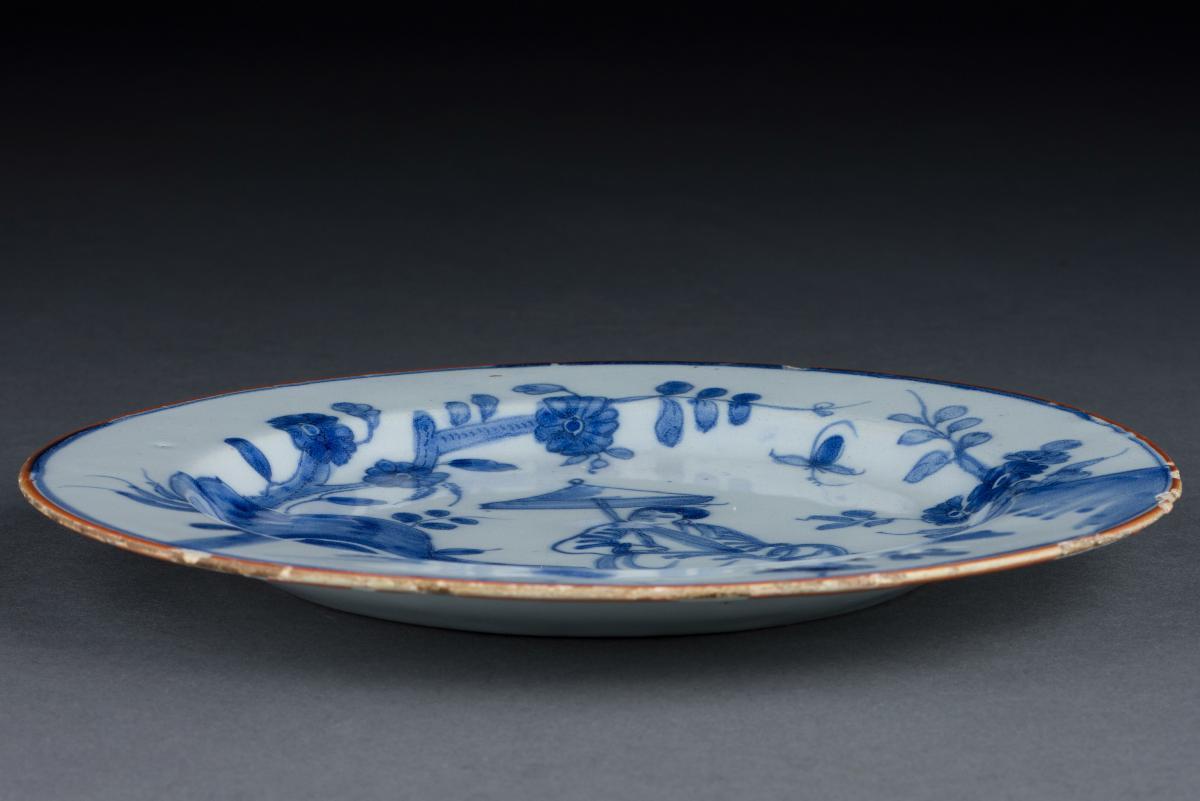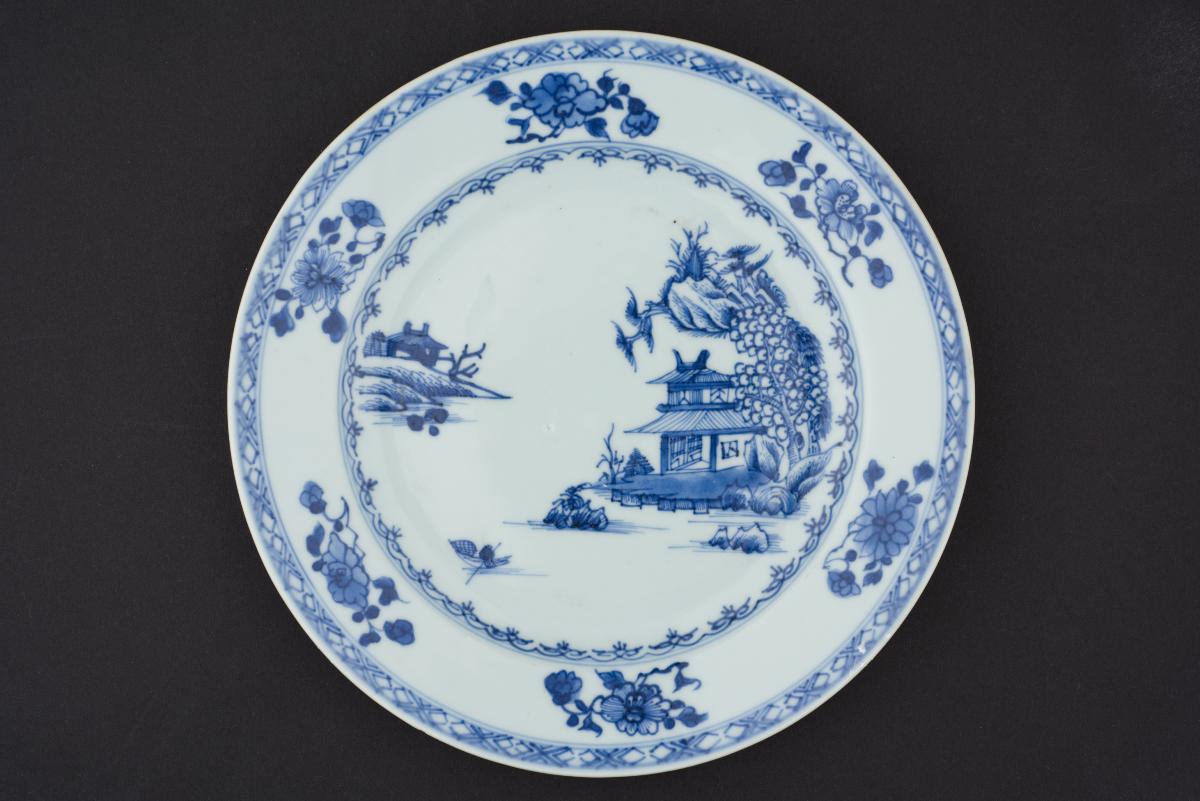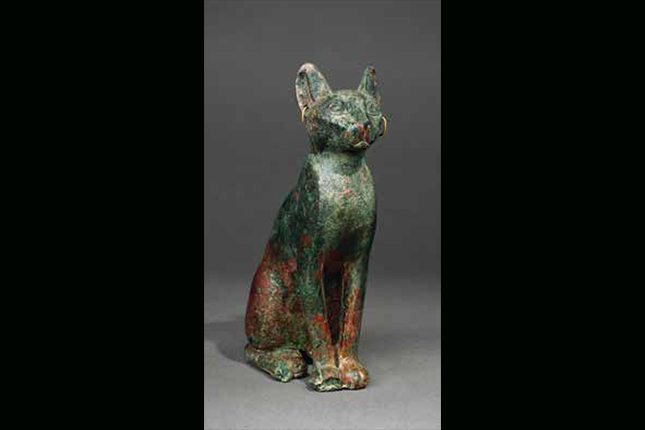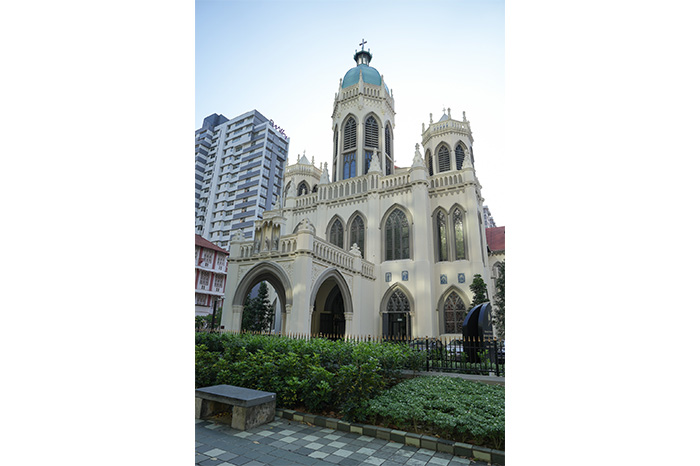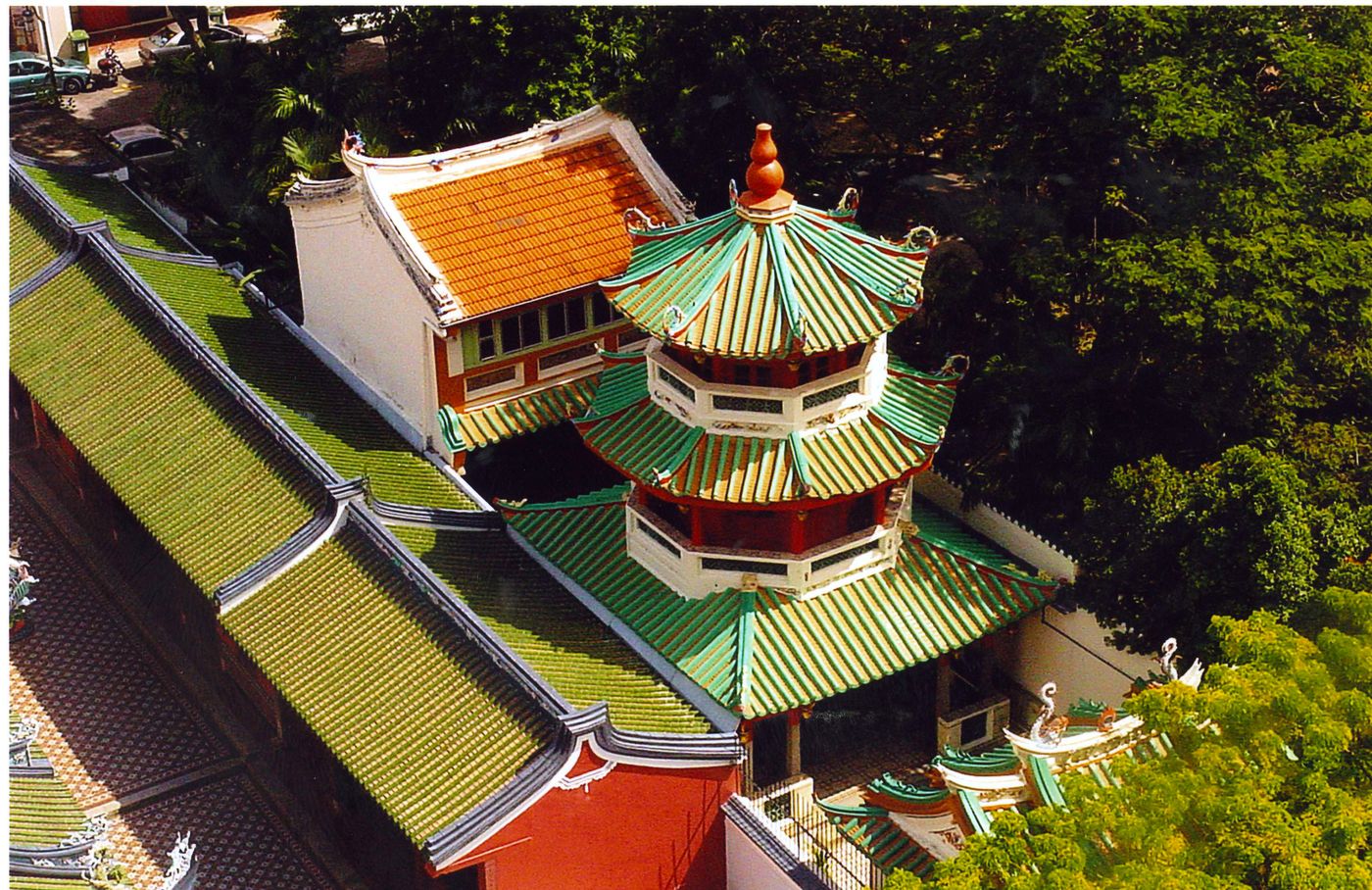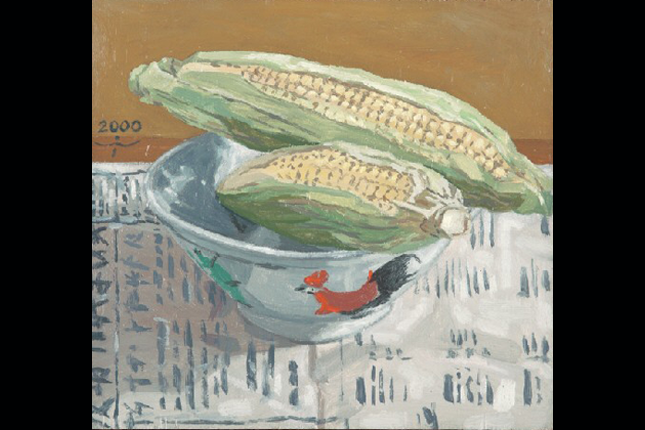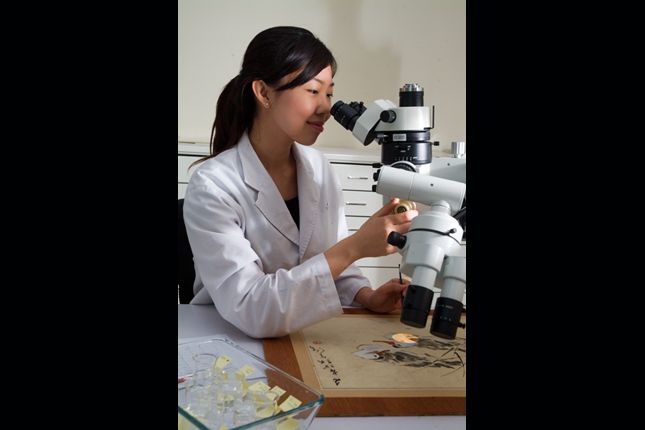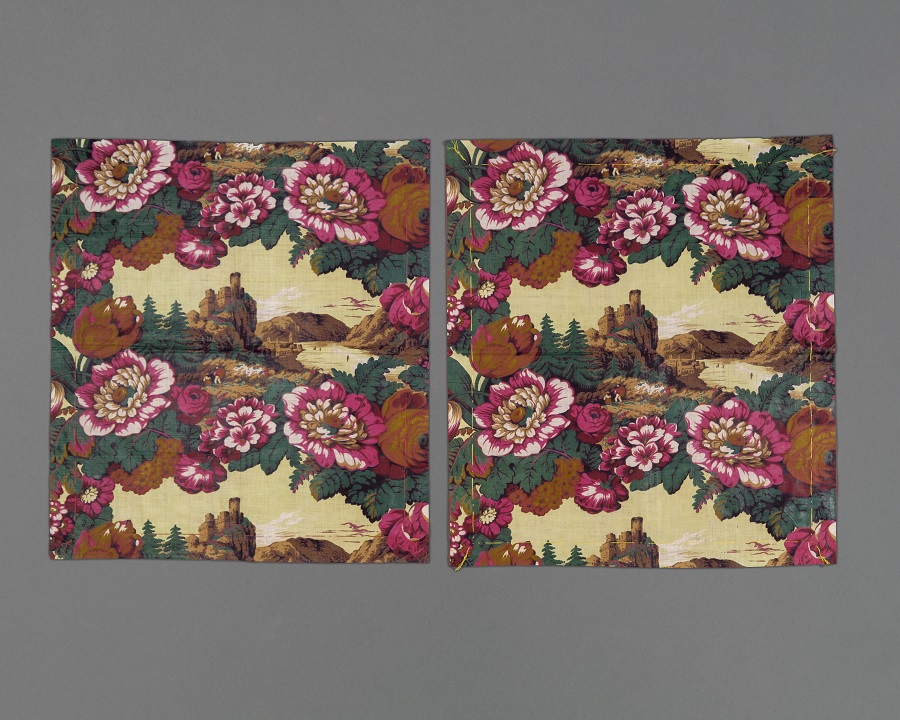This large blue and white earthenware dish combines the typical Kraak panelled border with motifs painted in the style of Chinese ‘Transitional’ porcelain, which consists of figures admidst landscapes. However, the Dutch painter has simplified the figures until they are cartoon-like. This dish has a panelled border of figures in landscapes alternating with chrysanthemums.Small quantities of Chinese porcelain first found their way to Europe in the 14th century. The Portuguese were the first Europeans to establish a trading base in Macau (1557) where they traded in Chinese porcelain. Vast quantities of wares were exported to Europe during the 17th century, with the entry of the Dutch, then English and other European trading companies. Cargoes bound for Europe at this time, mainly comprised blue and white porcelain. Two of the most popular types were Kraak and ‘Transitional’ porcelain. Kraak porcelain has a thinly potted body and decoration in panels painted in a lively style. ‘Transitional’ porcelain featured more naturalistic depictions of flora and fauna as well as narrative scenes on fine quality white porcelain. The term ‘Kraak’ was probably derived from the word ‘carrack’ referring to a type of Portuguese ship that brought porcelain to Europe. It could also be derived from the Dutch word ‘kraken’ which means ‘the ability to break easily’ or the term for a style of shelves used for porcelain display in Dutch homes.During the 17th century, Delft was one of the main European centres of ceramic production. With the growing popularity of Chinese imports, Delft produced low-fired earthenware applied with a tin-oxide glaze that imitated the white appearance of Chinese porcelain. The influence of Chinese blue and white porcelain is more evident on early Delftware. After 1750, the popularity of Delftware waned with the start of high-fired porcelain production elsewhere in Europe.




